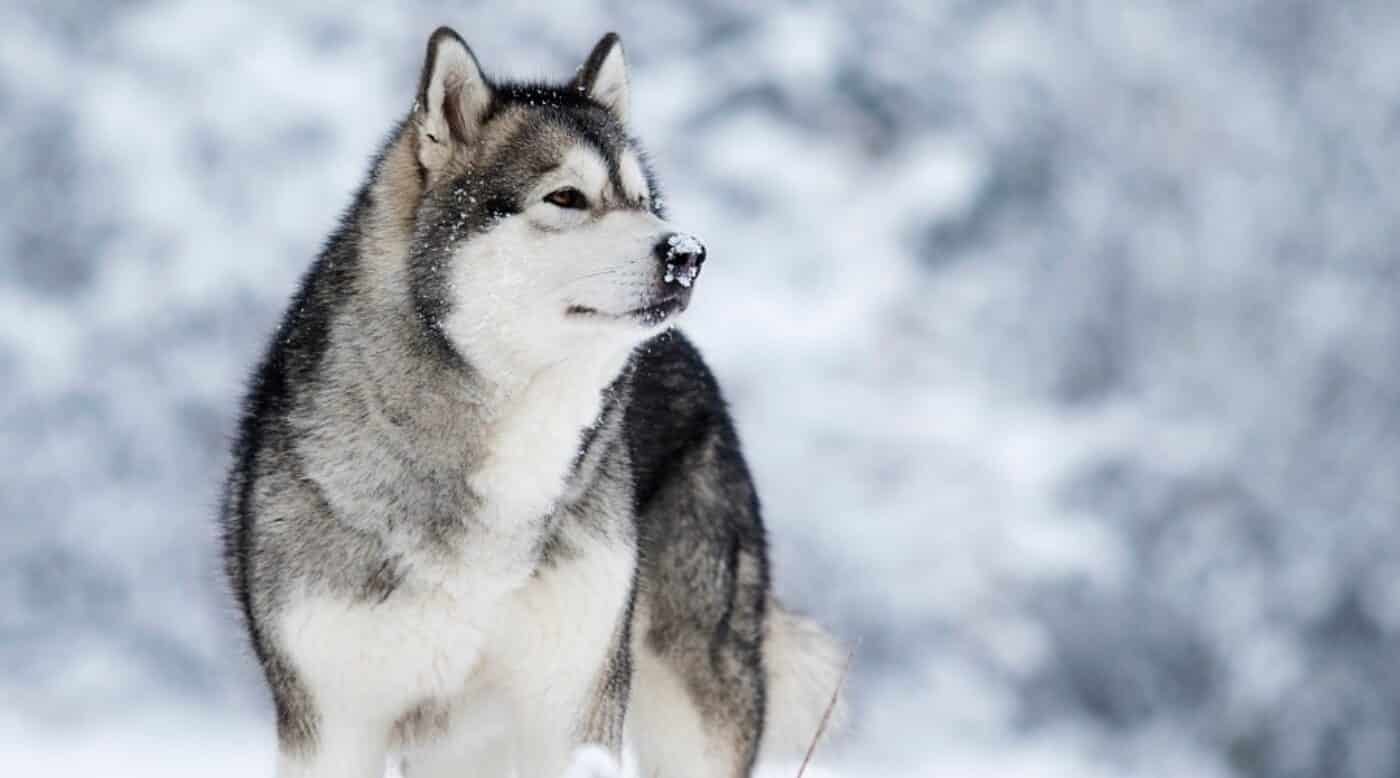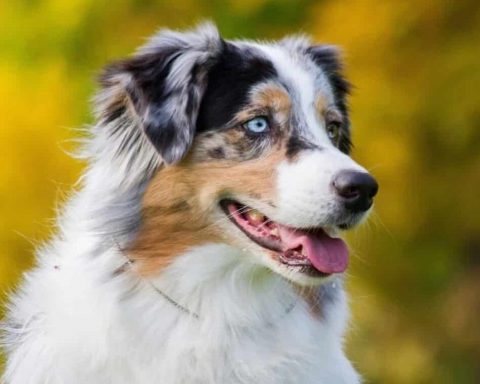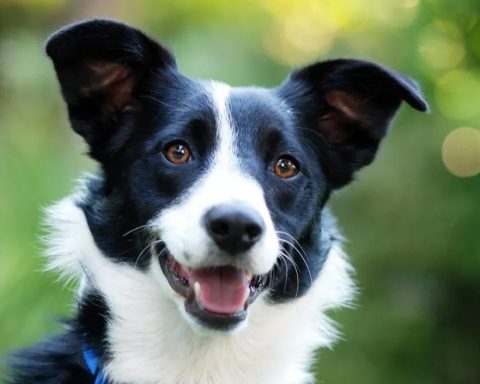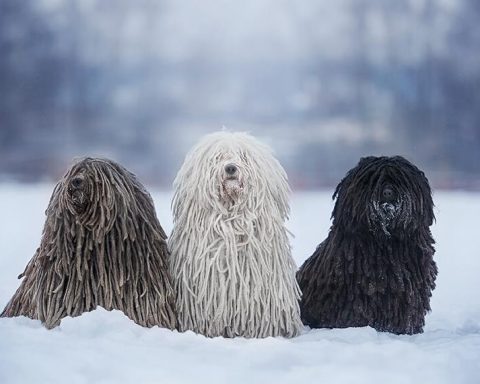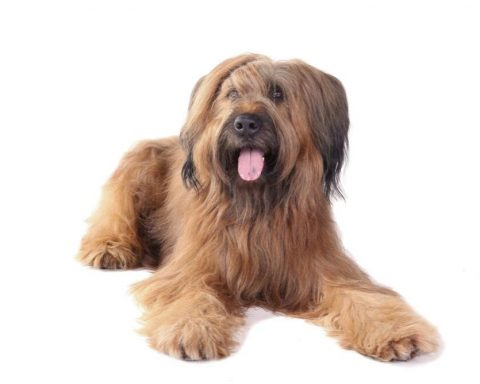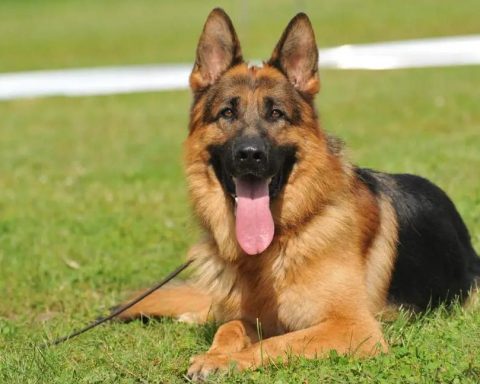The Alaskan Sled Dog is an old-fashioned polar sled dog that is sturdy, powerful, muscular and deep-chested. When they stand, their heads are erect and their eyes look alert and curious, giving the impression that they are energetic and proud.
The head is broad
The ears are triangular in shape and remain erect when alert.
The muzzle is large and tapers in width from the root to the tip of the nose. The muzzle is neither long and prominent nor short and thick. The coat is dense, and the cloak has enough length to protect the soft undercoat inside.
Alaskan Sled Dogs come in a variety of colors. The markings on their faces are a distinctive feature. The head has a “cap” and the face is all white or striped or mottled.
The tail is covered with soft hair that curls over the back and looks like wavy feathers.
Alaskan Sled Dogs must have strong bones, healthy legs, good paws, a deep chest and strong shoulders, and other body tissues must be equally strong to do their work.
The gait must be firm, harmonious and very efficient. They are not used merely to compare speed in pulling a sled; the Alaskan sled dog should have sufficient strength and endurance, and it is considered a great defect in any dog to have traits that prevent it from doing its work, such as a quick temperament.
Body Type
The size of the body of this breed is entirely natural. The optimum body size is 25 inches at the shoulder and 85 pounds for males and 23 inches at the shoulder and 75 pounds for females. However, height and weight are not the most important compared to some other qualities (proportions, gait, etc.). In competition, the closer the height and weight are to the above criteria, the better the chances of winning, only if all other conditions such as proportions, gait, etc. are very close. The depth of the chest is about half the height of the shoulder, and the deepest part of the chest should be located behind the forelegs. The length of the body (the distance from the withers to the highest point of the pelvis) is slightly greater than the height of the shoulders. The body should not look fat, and the bone mass is in normal proportion to the body.
Head
The head is broad and deep, not rough or awkward, and in proper proportion to the body. The expression is soft and friendly.
The eyes are slightly slanted on the head, brown in color, almond shaped and medium sized. The darker the color of the eyes, the better. Orchid colored eyes are out of character.
The ears are medium sized, but appear slightly smaller compared to the head. The ears are triangular in shape with slightly rounded tips. The ears are well separated and situated on the outside of the head against the back of the head, in a straight line with the outer corner of the eye. When the ears are erect, it is as if they are standing on the head. The erect ears may be tilted slightly forward, but when the dog is working, sometimes the ears are folded back toward the head. Ears that are positioned too high are defective. The head between the ears is wide and slightly bulging, tapering and flattening from the top of the head toward the eyes, and becoming flatter near the cheeks. There are slight wrinkles between the eyes.
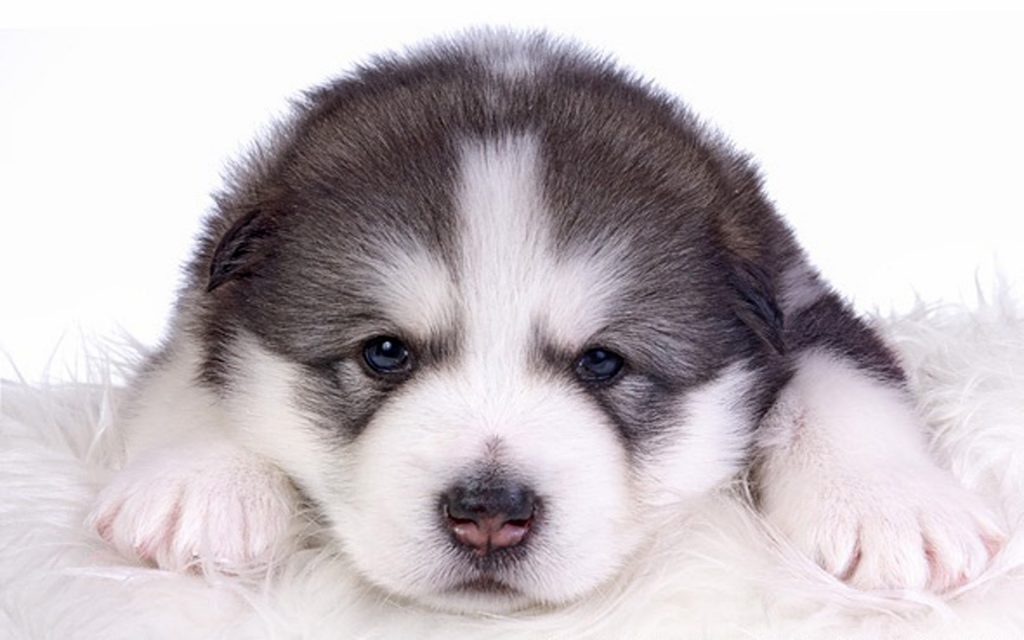
The outline of the head and the outline of the muzzle resemble two straight lines folded slightly downward and joined together. The muzzle appears long and large compared to the head, and its width and depth taper off from the point where it meets the head toward the nose mirror. Dogs of all colors, except those with red coats, should have black nose-glasses, eye-rings and lips.
Red-coated dogs are allowed to have a brown nose, eye ring and lips. A “snow nose” with light-colored stripes is acceptable.
The lips are tightly closed. The upper and lower jaws are wide with large teeth. The bite is a clipped bite and either a protruding upper or lower jaw bite is considered a defect.
Neck, Dorsal Line, Body
The neck is firm and slightly arched. The chest is fairly well developed. The body structure is simple, but not short and small. The back is very straight and slopes slightly towards the hips.
The loin is hard and muscular. Too long a loin weakens the whole back and is a defect. The tail is positioned at the end of the spine. When they are not working, the tail rolls over their back. Their tails do not curl tightly over their backs and the hairs on their tails are not short and brush-like.
The Alaskan Sled Dog’s tail is covered with soft hair that looks like wavy feathers.
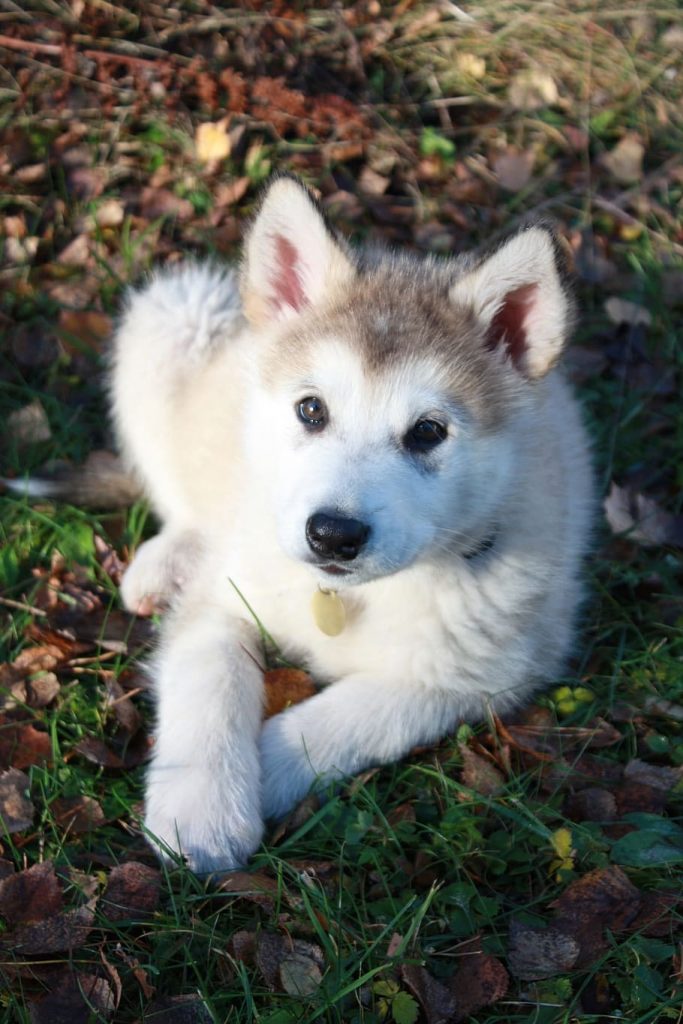
Forequarters
The shoulders are moderately sloping; the forelimbs are thickly boned and muscled, and, when viewed from the front, are straight from the shoulder to the carpus. When viewed from the side, the carpals are short, strong and slightly sloping. The paws are of the snowshoe type, tight and deep, and with the proper footpads, appear firm and simple. The paws are large and the toes are tight and slightly arched. Protective hair grows between the toes.
Foot pads are thick and tough; toenails are short and strong.
Hindquarters
The hind legs are broad and very muscular throughout the thighs; the hind knees are moderately inclined; the fly joints are moderately inclined and properly downward. When viewed from behind, the hind legs are in the same line as the corresponding front legs, neither too far apart nor too close together, both when standing and when walking. Wolf claws on the hind legs are not required and need to be removed when the puppy is born.
Coat
The Alaskan Sled Dog has a thick, coarse, hard coat that cannot be long or soft. The undercoat is thick, 1 to 2 inches thick, greasy, and soft. The length of the cape varies with the undercoat.
The coat is shorter on the sides of the body, gradually getting longer as it extends forward to the shoulders and neck, and progressively longer down and back, to the hips and tail.
The Alaskan Sled Dog usually has a shorter and less dense coat throughout the summer months. In competition, this breed is not allowed to trim the coat, except on the foot and paw for neatness.
Color
Generally ranges from light gray to black and varying degrees of red. There is only one solid color that is acceptable, pure white. White is the predominant color of the lower half of the body, and white is also found in the markings on the legs, paws and face. White markings on the forehead and collar, or spots on the neck are attractive and acceptable. A body covered with discontinuous color or with uneven coloration is a defect.
Gait
The gait of the Alaskan Sled Dog is steady, harmonious and powerful. It is quite agile for its size and build. Viewed from the side, the strong drive provided by the hindquarters is transmitted to the forequarters through the muscular loins. The forequarters receive the drive transmitted from the rear with a smooth stride. Observed from the front or from behind, the legs are always straight, neither too close together nor too far apart. At a fast trot, the paws are close together toward the midline of the body. An unnatural or inefficient gait that tires easily is considered a defect.
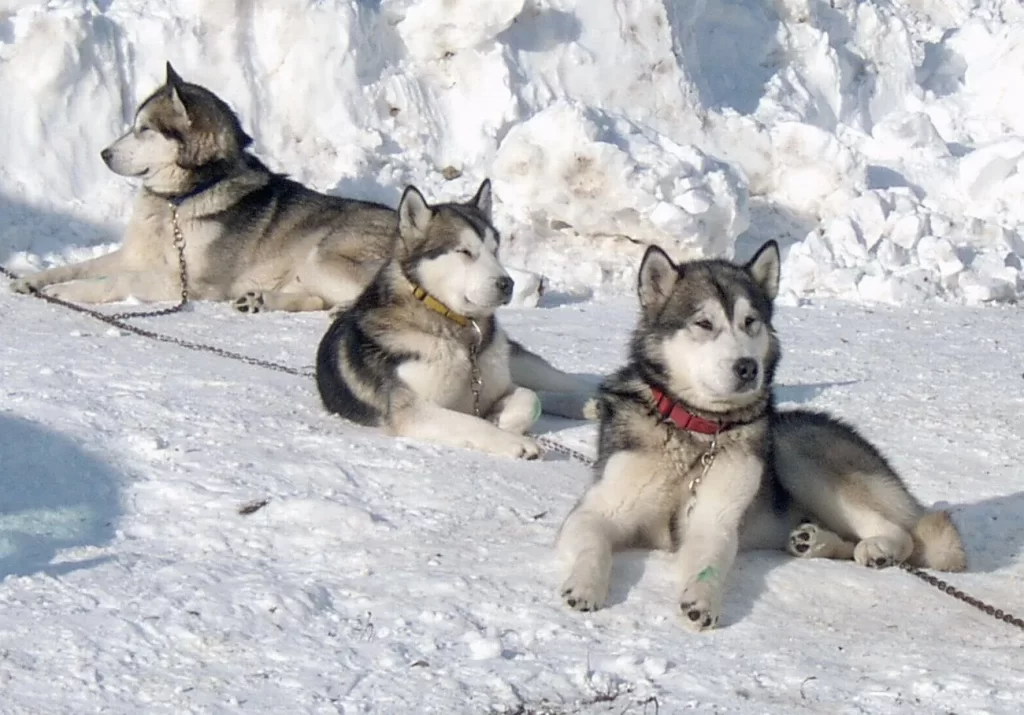
Temperament
The Alaskan Sled Dog is very friendly and is a “friend dog” rather than a “loner”. It is a loyal and affectionate companion, but generally gives the impression of nobility and sophistication.
Summarizing
FOCUS: When judging the Alaskan Sled Dog, the main thing to focus on is that this is a dog that hauls sleds and loads in the polar regions. So in the scoring, it needs to be determined by the degree of deviation from the requirements described earlier and the degree of impact on the completion of the job caused in some details. The legs of the Alaskan sled dog must be exceedingly strong and powerful.
Whether in front or behind, standing or moving, any problem with the legs and paws is a serious defect.
The conditions listed below are all considered defects:
Sickle leg
Cow limbs
Bad flying knuckles
Straight shoulders, lack of angulation
Unnatural gait (including failure to meet standards of stability, harmony, and strength)
Dullness
Insufficient bone mass
Disproportionate.
Out of shape
Blue eyes.
Standard Adoption Date April 12, 1994
Standard Implementation Date May 31, 1994
